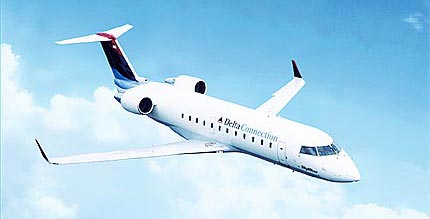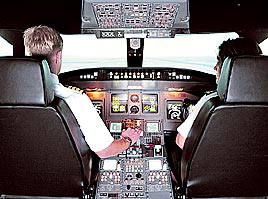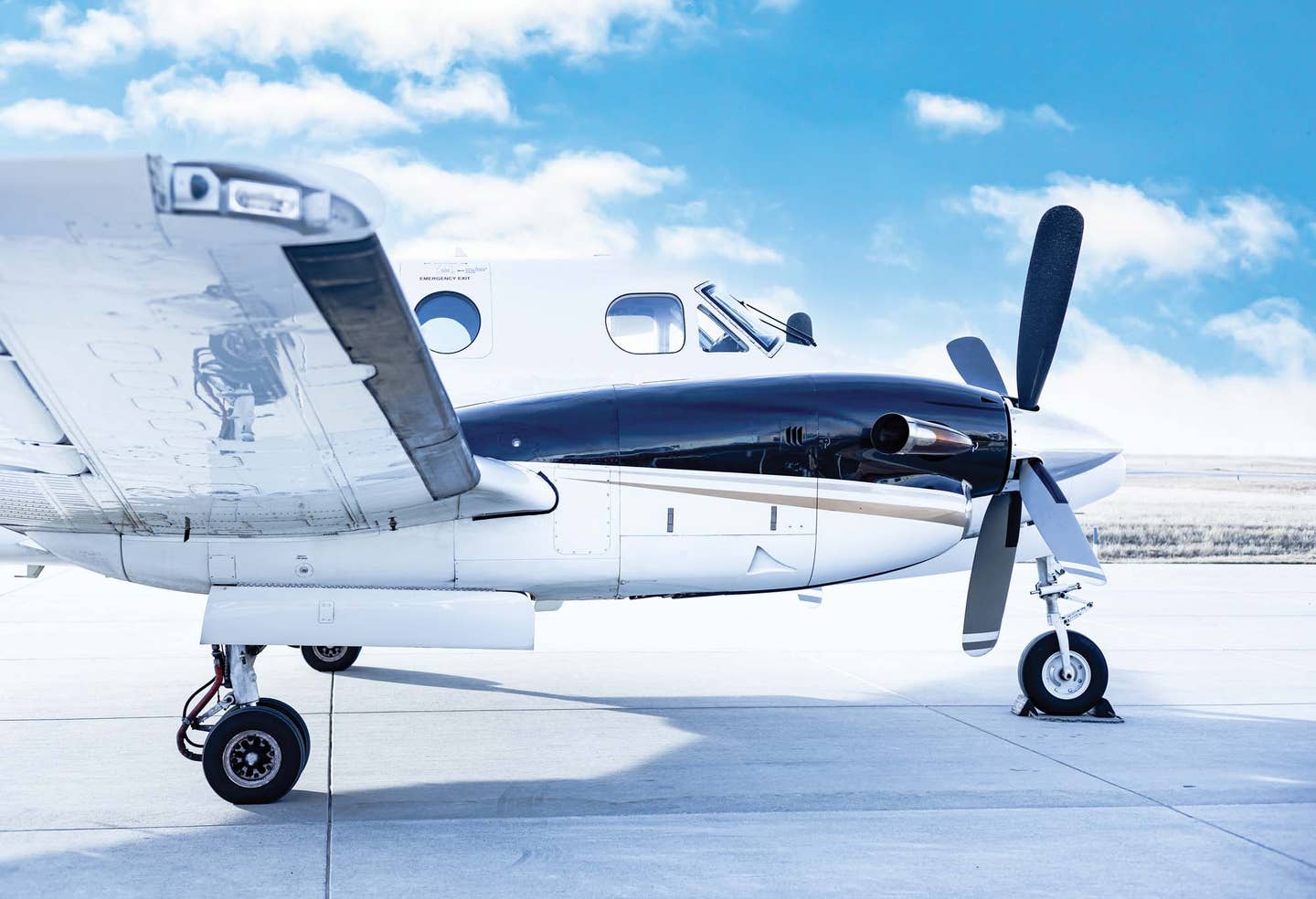Cockpit Career Update Part 2: Changes In Pilot Careers
Last month, we discussed how today may be the best time to prepare for an airline job. In this second part of our three-part series, we’ll show you the technological developments currently happening in the industry.
 |
| Pan Am International Flight Academy offers 30 hours of training in a CRJ simulator. |
United Air Lines recently put 100 aircraft on hold. But this isn't an indication of pilot careers going down the tubes. On the contrary, it's only indicative of the changes that are currently going on in the industry. While the major airlines are cutting down, the regional airlines are in full bloom. The routes that are run by major airlines with large airplanes and low load factors are being taken over by low-cost regional operators whose airplanes are almost always full. One example of this transition occurred as recently as March 9, 2004, when United Air Lines announced agreements with three regional airlines to begin operating United Express routes this year. As a result of this agreement, Republic Airlines will fly 16 70-seat regional jets (RJs), Chautauqua Airlines will operate 16 50-seat RJs and Shuttle America will utilize 10 Saab 340 turbos under the United Express logo.
Passengers' transition from the major airlines to the nationals and regionals has spurred a hiring spree, which started in the beginning of the year. Mesa Airlines hired 145 pilots in January and February, including 33 from the Mesa Airlines Pilot Development (MAPD) program.
"Mesa Airlines was just on campus recruiting on March 8 and 9," says Pan Am International Flight Academy's pilot-placement manager Stephanie Heron-Weeber. "This is the first time in quite a while that we've had an airline come on campus to recruit, and out of 20 interviews, 17 of our candidates were hired."
With the longer routes and larger passenger loads stemming from the growth occurring at the regional and national airlines, the companies are upgrading their aircraft. More and more of these airlines are shifting from the noisy turboprops to regional jets, since they carry more passengers and provide better comfort. According to the Regional Airline Association, the total number of regional jets increased from 1,050 to 1,300 last year, almost a 25% increase. In the meantime, the number of turboprops decreased by about 10%.
The increasing number of passengers per aircraft has enabled these airlines to improve pilot remunerations. "You can get paid $100,000 a year with company-paid retirement plans," says Kit Darby, president of AIR, Inc., an aviation career resource company. "So, the companies at the regional and national airlines are becoming bigger career players than they were in the past." Formerly, pilots would immediately move from regional airlines to the majors. But today, they're more likely to stay with the regional company long term.
 |
| With major airlines handing down more passengers to the regionals, several regional jets are taking to the skies. |
Another consequence of the equipment replacement is a change in the evaluation process for potential pilot candidates. Few airlines are choosing to eliminate simulator evaluations altogether. Instead, they're using cognitive tests. According to Darby, cognitive tests are "extremely good predictors of simulator performance," and they're much less expensive than simulator evaluations.
"Our numbers show that the big airlines spend $4,000 to $5,000 per candidate during the screening," continues Darby. This is because the company provides not only an expensive simulator, but also a captain or two for the briefing and the evaluation.
But despite the cost, most airlines still use simulators to evaluate their applicants. "Since many companies are moving toward flying all jets and they don't see any benefits from maintaining a simulator for an airplane that isn't part of the fleet, they'll probably go to RJ simulators," says Darby.
This transition can prove to be very difficult for candidates who have never flown comparable equipment. Those pilots may need to invest in a simulator training program to increase their chances of getting hired.
Many flight schools have already started implementing regional jet simulators into their programs. Pan Am's students spend 30 hours in a CRJ (Canadair Regional Jet) simulator with a flight management system (FMS), a flight director and a full-glass cockpit. Their studies also include two weeks of groundschool, which focuses on generic systems of regional aircraft, such as the Saab, Embraer Regional Jet (ERJ) and CRJ. "While our students will go on to work for us as CFIs before moving on to the airlines, we're not just training flight instructors," says Heron-Weeber. "We're training airline pilots."
Similarly, MAPD recently started a 40-hour training program in a regional jet flight-training device (FTD) with 48 hours of ground instruction on systems, CRM, callouts and checklists. "Our graduates have essentially been there and done that when they go on to Mesa Airlines' groundschool and advanced level-D simulators," says Rich Castle, chief flight instructor for MAPD's Farmington, N.M., location.
And several aeronautical universities are now increasing their focus on training their pilots in FTDs, even at the basic level. Embry-Riddle Aeronautical University has just implemented a new flight-training curriculum using FTDs for the Cessna 172 Skyhawk, Piper PA44 Seminole and CRJ. These FTDs have 220-degree wraparound panels simulating several flying environments on actual aircraft.
"One reason is that it's significantly less expensive," says Ted Beneigh, professor of aeronautical science at Embry-Riddle. "You can also get better training in an FTD with real-life scenarios."
Stalls, spins and emergencies such as engine fires and instrument failures---which are hard to simulate in a real aircraft---can be practiced safely in an FTD, and procedures can be reinforced at the earliest stages of flight training. The simulator also can be stopped at any time during the flight for discussion in case the student makes a mistake, which makes the learning process more productive.
Pilots who are dreaming of a successful airline career need to follow the right path during their training to maximize their potential to get hired. And they shouldn't be discouraged by the major airlines' decision to cut the use of their airplanes. These changes in the industry may well make room for more pilot hiring in the future, with sufficient pay and benefits. Stay tuned for the last part in our series about the trends in the airline industry.
Part 1: Is Now The Time To Prepare For An Airline Job?

Subscribe to Our Newsletter
Get the latest Plane & Pilot Magazine stories delivered directly to your inbox






